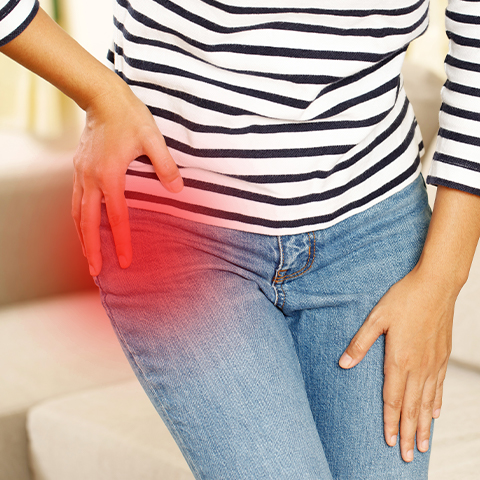Schedule An Appointment With Us
Are Your Symptoms Affecting Your Quality Of Life?
Consult our MOH-accredited hip specialist for a comprehensive diagnosis of your condition & a personalised treatment plan.
Femoroacetabular impingement, commonly abbreviated as FAI, is a condition where extra bone grows along one or both of the bones that form the hip joint — giving the bones an irregular shape. These bones may rub against each other during movement, causing friction that can lead to joint damage and pain.
MBBS
MRCSEd
MMED (Ortho)
FRCSEd

Femoroacetabular impingement can be classified into three types based on the areas of bone overgrowth. These types are:
The development of femoroacetabular impingement is influenced by various factors, both genetic and environmental:
The symptoms of femoroacetabular impingement can vary, but typically include:
The process of diagnosing femoroacetabular impingement typically includes several steps:
During the first appointment, your orthopaedic surgeon discusses the patient’s general health and specific hip symptoms. This conversation is crucial in understanding the patient’s condition and potential causes of their pain.
As part of the physical examination, your orthopaedic surgeon often performs the impingement test. This involves bringing the patient’s knee towards the chest and then rotating it inward towards the opposite shoulder. A positive result, indicated by the recreation of hip pain, suggests impingement.
To confirm the presence of FAI and assess the extent of the condition, various imaging tests are employed:
Your orthopaedic surgeon may inject a numbing medicine into the hip joint. If this injection provides temporary relief from pain, it helps confirm that FAI is the source of the issue.
These diagnostic methods combined give a comprehensive understanding of the condition, aiding in the formulation of an effective treatment plan.
Treatment for femoroacetabular impingement (FAI) is tailored to the individual’s condition and the extent of damage. The options fall into two categories: non-surgical and surgical.
In cases where non-surgical methods are insufficient, surgical intervention may be considered:
Schedule An Appointment With Us
Consult our MOH-accredited hip specialist for a comprehensive diagnosis of your condition & a personalised treatment plan.
Most cases of femoroacetabular impingement (FAI) are not preventable due to their structural and genetic nature. Focusing on prompt treatment and management can play a significant role in preventing further damage to the hip.
For individuals diagnosed with femoroacetabular impingement (FAI), asking the right questions can help in understanding and managing the condition effectively:
Consult a hip specialist if you experience any of the following:

MBBS
MRCSEd
MMED (Ortho)
FRCSEd
With over 18 years of experience, Dr Poh Seng Yew is an orthopaedic surgeon specialising in hip, knee, shoulder and elbow surgery, sports medicine, and trauma surgery.




Weekdays: 9.00am – 5.00pm
Saturdays: 9.00am – 1.00pm
Sundays and Public Holidays: Closed
Your symptoms shouldn’t affect your quality of life or disrupt daily activities. Reach out to our friendly clinic staff today & schedule a consultation.